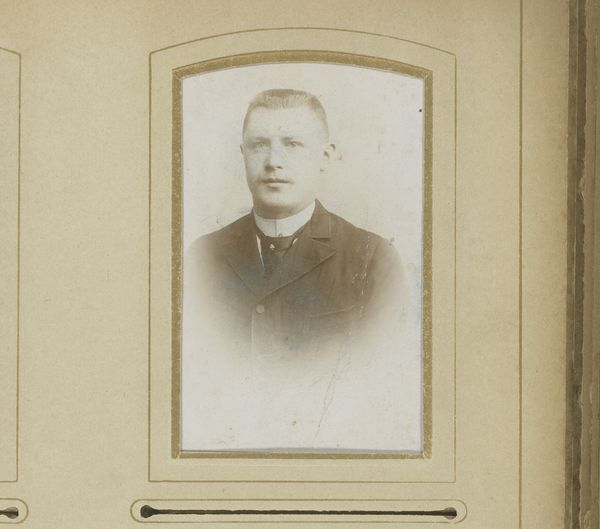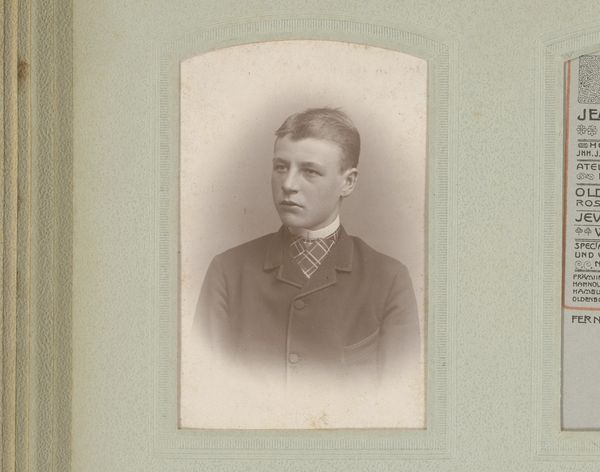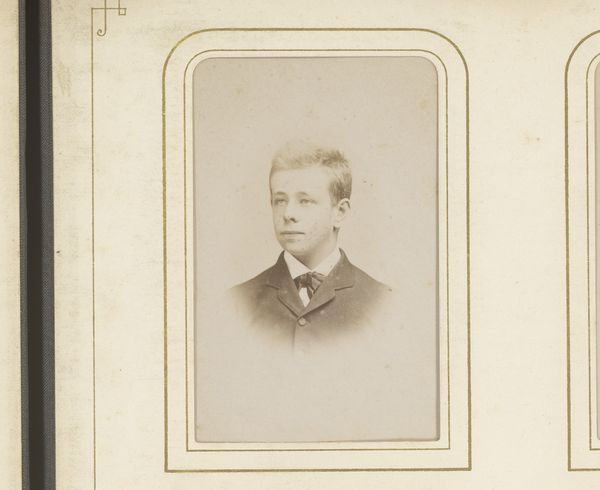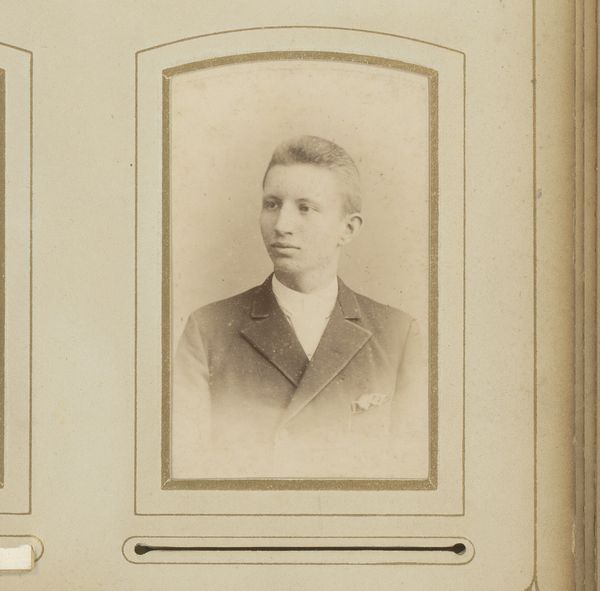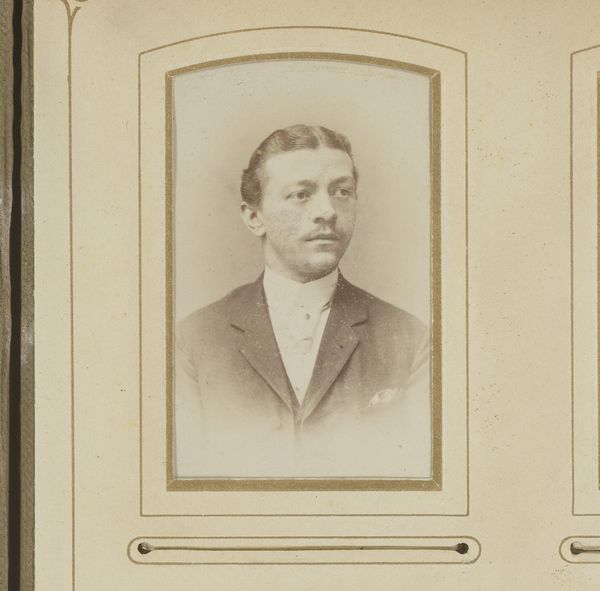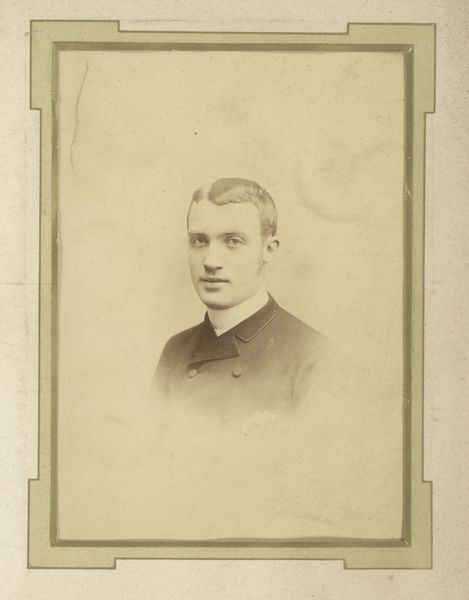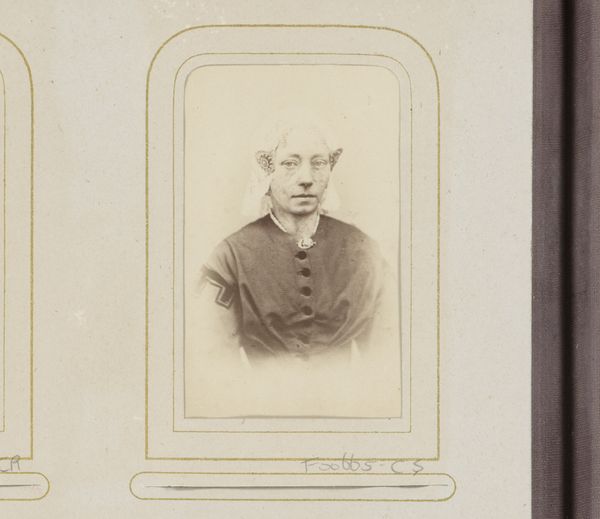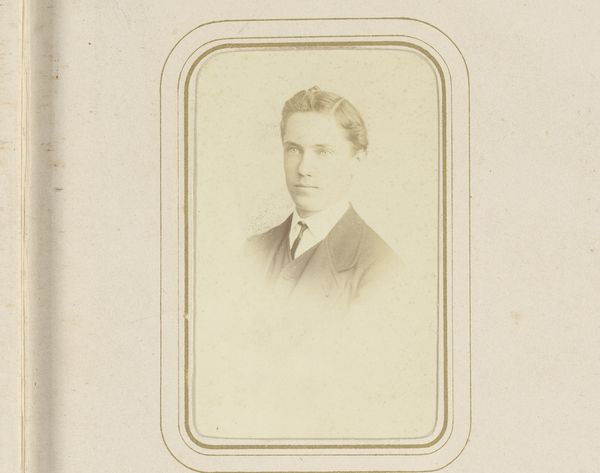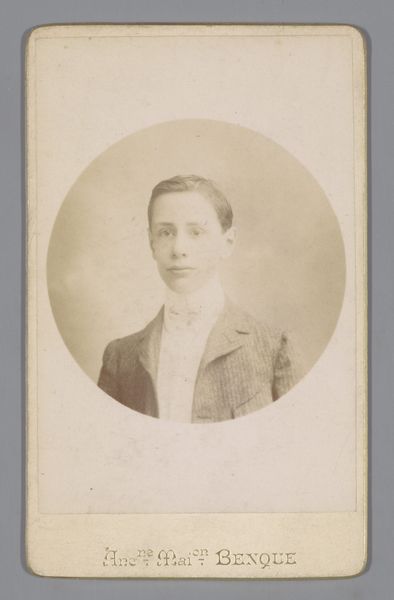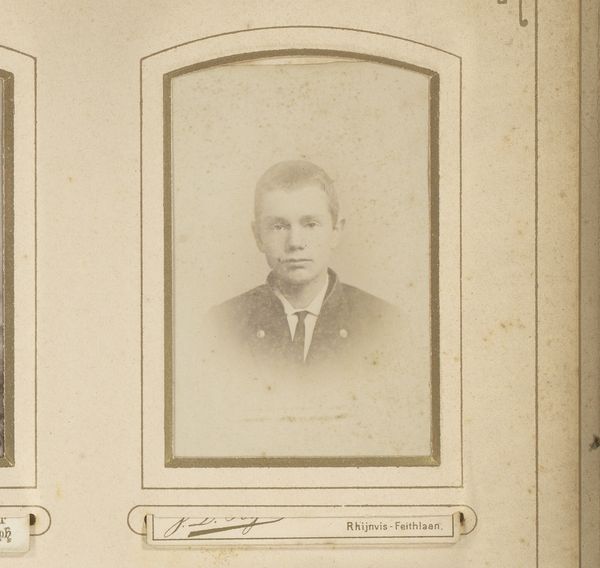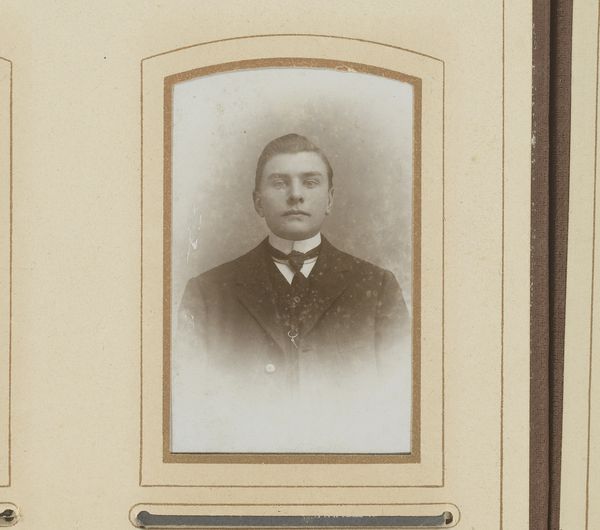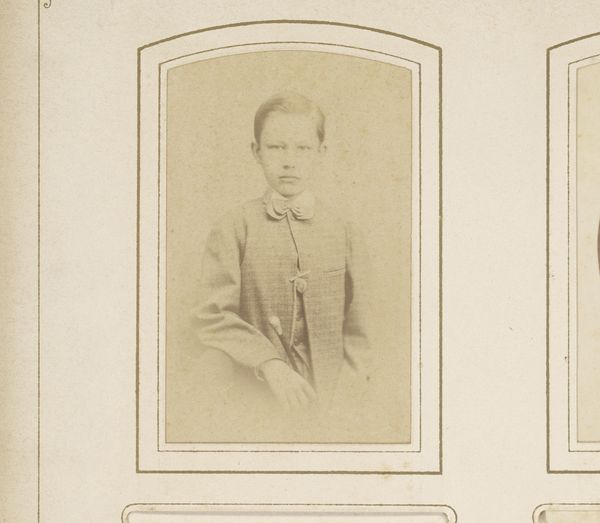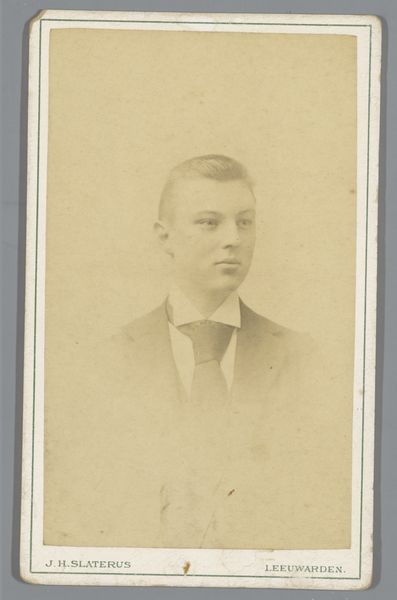
photography
#
portrait
#
photography
Dimensions: height 81 mm, width 50 mm
Copyright: Rijks Museum: Open Domain
Curator: We're looking at a portrait from the late 19th or early 20th century, entitled "Portret van een jongeman," housed here at the Rijksmuseum, created using photographic methods. Editor: He has a very gentle presence, wouldn’t you agree? There's a quiet reserve in his expression. The soft, almost ethereal quality of the photograph adds to that impression. It’s like glimpsing a memory. Curator: That soft quality speaks to the period. Early photography aimed to emulate painted portraits, often idealizing the subject. There’s a formality to it, despite what you perceive as gentleness. The subject’s posture, clothing, and the framing all reflect a desire for respectability and permanence. Editor: And permanence of image was a kind of control in nascent photographic technology. But those traces of retouching around his face seem interesting. They hint at societal ideals—erasing supposed flaws. Photography wanted to appear truthful while molding a new set of beliefs for those depicted. Curator: Precisely. Early photographic portraits held significant cultural weight. For many, it was the first time they had access to something other than memory as visual record. The studio portrait became a ritual, solidifying social status and memorializing oneself for posterity. It also democratized access to portraits. Editor: Right— suddenly, this type of visual presence wasn’t only for nobility anymore. Consider the rise of middle-class consciousness and visibility around that time, along with shifting social norms around identity presentation, not to mention technical constraints! And a desire to appear in an elegant and eternal form. Curator: He doesn't have the elaborate setting of nobility but has that same stiff formal presence in terms of posture, making his presence into more than what the picture has captured as evidence. Editor: What strikes me is the delicate way the light falls across his face, a play of shadows that suggests deeper emotional complexity. He becomes a vessel of human history to contemplate our relationship to change and permanence. Curator: It really is about his own history: this photographic object is also the witness of broader cultural transformation, allowing us to peer into lives across the ages. Editor: He makes me consider that intersection of technology, identity, and time in the scope of individual experience—as he would, most probably.
Comments
No comments
Be the first to comment and join the conversation on the ultimate creative platform.
